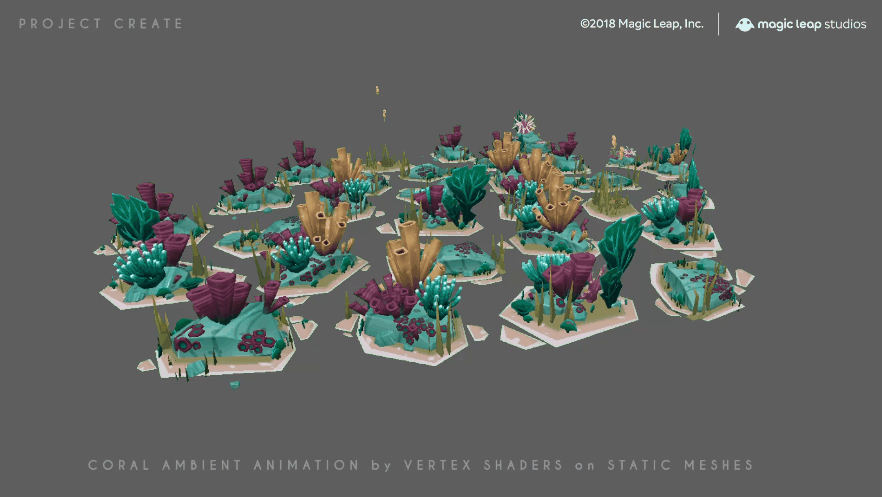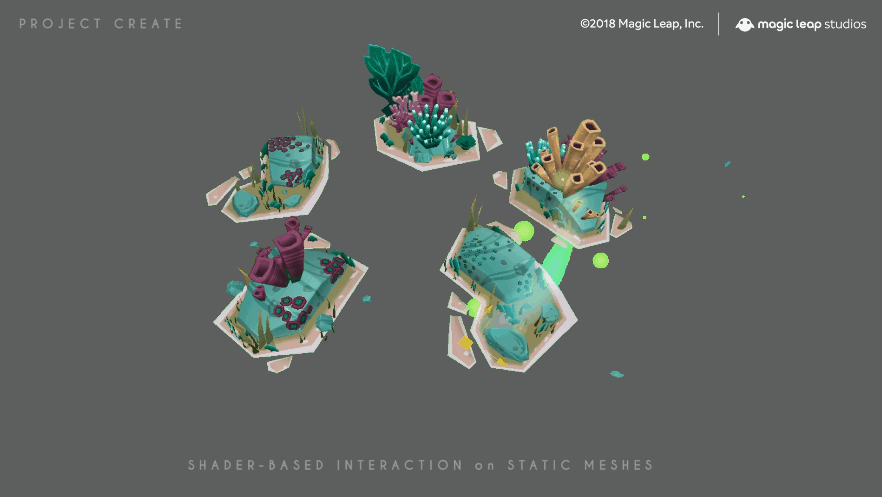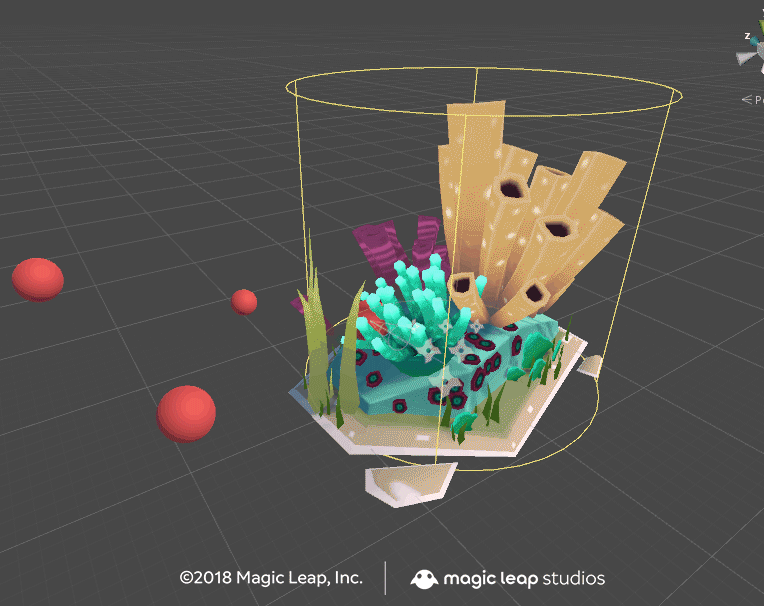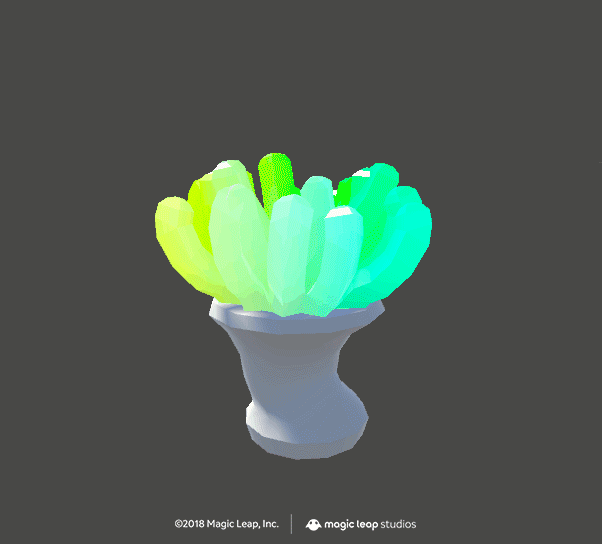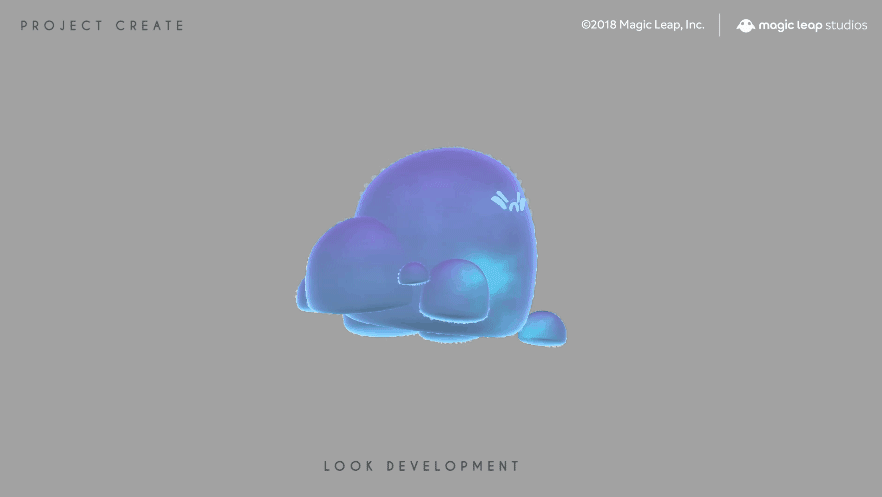Project CREATE: Shaders & Interaction
Some of the shaders I did for Project Create that went on top of the work from the fun team of Magic Leap Studios. My aim was to give life to some of the static meshes while increasing user interaction and enjoyment without incurring too much of a performance hit. Much of the work was done by pushing data to the GPU and having the vertex shader calculate.
Concepting: Danielle Brown, Cara Khan
Modeling: Mouhsine Adnani, Adam Glueckert, Udell Infante, Sean Couture
Animation: Jenna Jaillet, Jonathan Mangagil, David Wilson
Character Behaviors: Andrew Moran, Kathryn Scelina
Some of the shaders and look development I did for Project Create, a mobile app for the Magic Leap 1. I worked with vertex shaders to increase user interaction while maintaining a good performance on the mobile device.
Project Create Trailer
